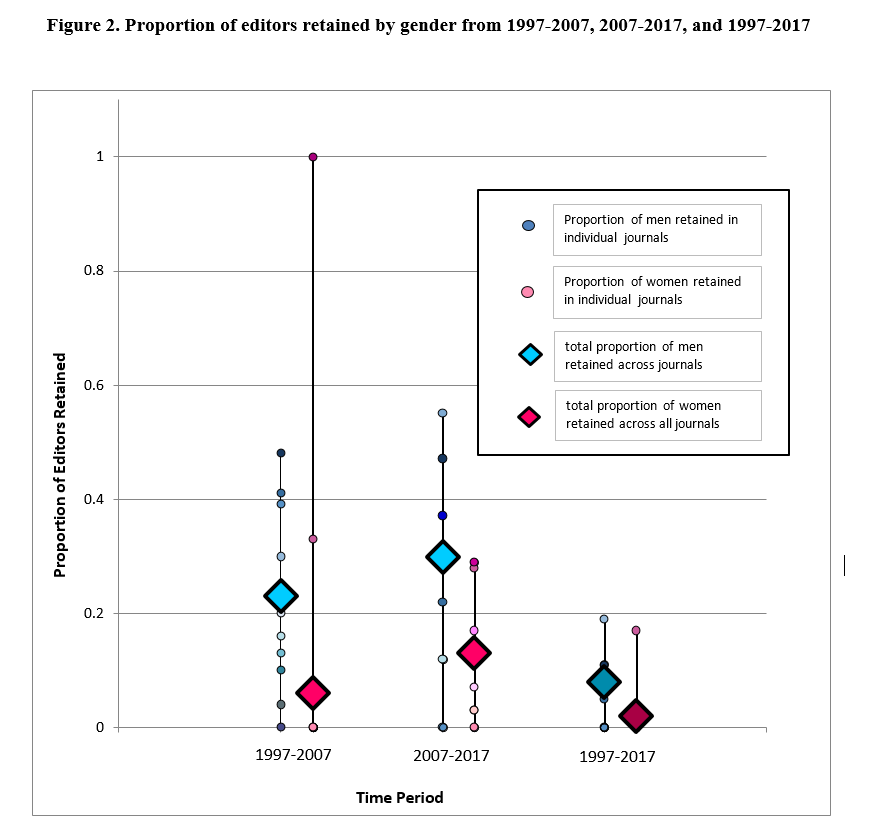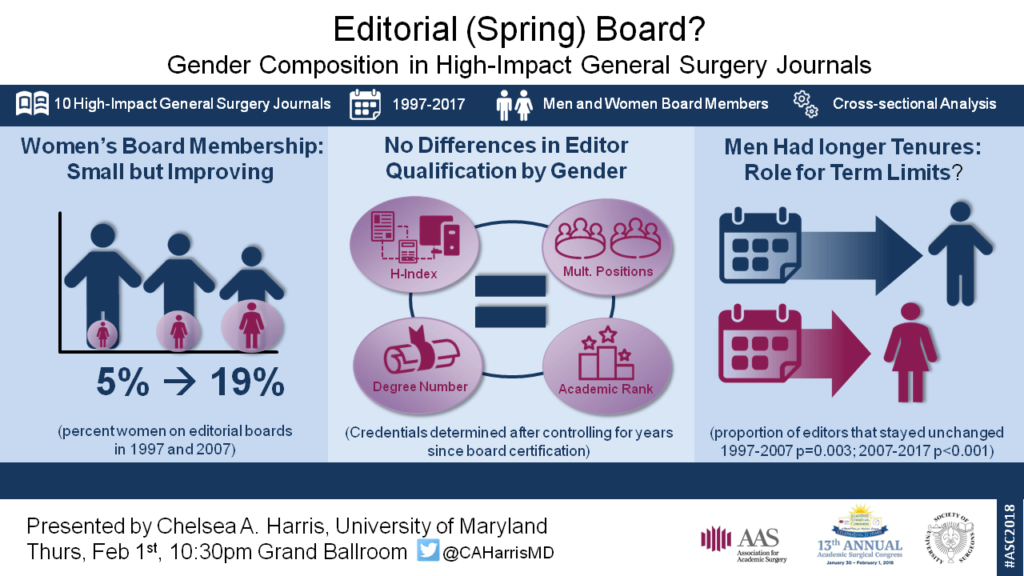C. A. Harris1, T. Banerjee7, M. Cramer4, S. Manz6, S. Ward5, J. B. Dimick3, D. A. Telem2 1University Of Michigan,Division Of Plastic Surgery, Department Of Surgery,Ann Arbor, MI, USA 2University Of Michigan,Michigan Women’s Surgical Collaborative,Ann Arbor, MI, USA 3University Of Michigan,Department Of Surgery,Ann Arbor, MI, USA 4Cornell University,Ithaca, NY, USA 5University Of Michigan,Division Of Cardiac Surgery, Department Of Surgery,Ann Arbor, MI, USA 6University Of Michigan,Ann Arbor, MI, USA 7University Of Michigan,Institute For Health Policy And Innovation,Ann Arbor, MI, USA 8University Of Michigan,Institute For Health Policy And Innovation,Ann Arbor, MI, USA
Introduction: Serving on an editorial board is an important step in many surgeons’ careers; however, evidence suggests that access to these positions may differ based on gender. Analyses of medical journals indicate although women’s representation is improving, they remain a clear minority. Whether similar trends exist in surgery and whether women surgeons face different qualification thresholds for appointment remains unknown. To address this knowledge gap, we quantify the current gender composition of ten high-impact surgery journals, evaluate qualification metrics by gender, and delineate how board composition has changed over time.
Methods: Ten prominent general surgery journals were selected for inclusion based on impact factor. Editor characteristics were assigned using faculty websites, Scopus profiles, and the American Board of Surgery certification database. We performed cross-sectional analyses of editorial board composition by gender for 1997, 2007, and 2017 using univariate and logistic regression analysis. Variation in qualifications by gender was assessed by comparing H-index, academic rank, and number of additional degrees. Gender-based differences in editorial board member turnover and multiple board positions were evaluated for each time interval.
Results: Over 20 years, women’s editorial presence has increased from 5% to 19%. Initial univariate analysis demonstrated significant qualification differences. Compared to women, men had higher mean H-indices (39.1 vs 21.9; p<0.001) and more full professorships (70.2% vs 55.8% p=0.02); whereas, a higher percentage of women had additional degrees (36.1% vs 21.9% p=0.004). Following logistic regression controlling for length of time since board certification, these associations became non-significant (degrees p= 0.051; academic rank p=0.56; H-index p=0.35). Both women and men were equally likely to hold multiple board positions (1997 p=0.74; 2007 p=0.42; 2017 p=0.69). Journals retained higher proportions of men in each time interval (1997-2007 p=0.003; 2007-2017 p= <0.001; 1997-2017 p=0.01) and retention rates increased over time (Figure 1).
Conclusion: Women surgeons have a small but growing presence on surgical editorial boards, and any qualification differences by gender are likely attributable to practice length. Although this suggests improved gender parity, gaps remain, and may be perpetuated by inequitable retention. More importantly, rising retention rates may limit next-generation surgeons’ opportunities regardless of gender. Strategies such as imposing term limits or instituting merit-based performance reviews may help balance the need for high-level expertise with efforts to ensure that editorial boards capture the field’s changing demographics.

